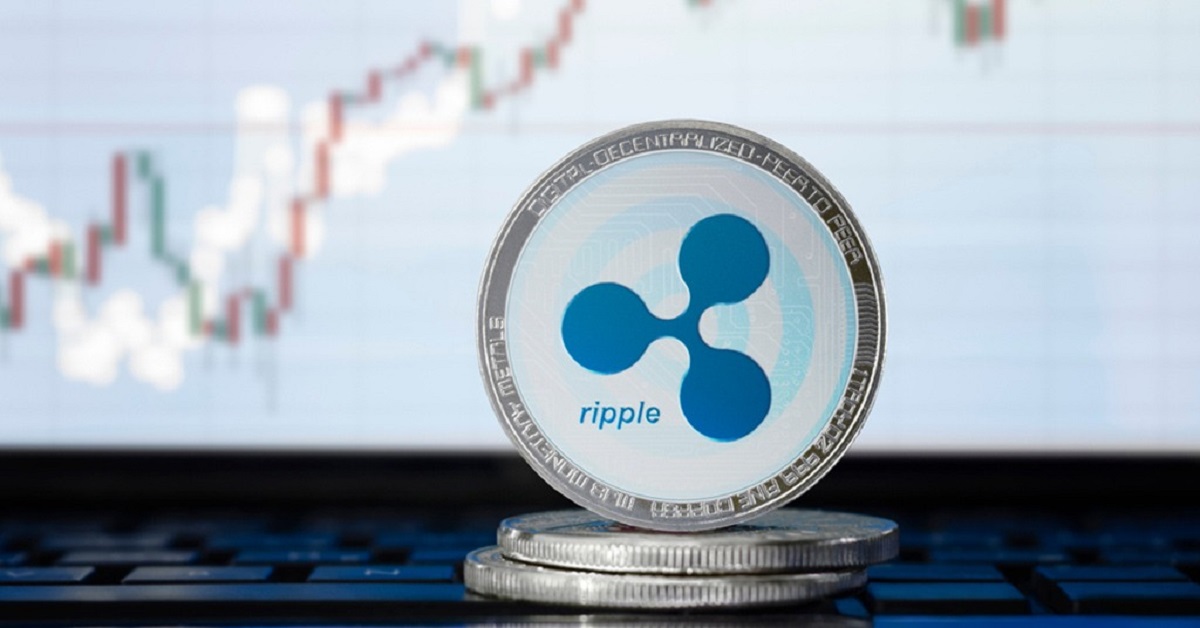Introduction
Welcome to the digital age, where technology continues to revolutionize various aspects of our lives, including how we handle and exchange money. Gone are the days when physical cash was the primary mode of payment. With the rise of the internet and advancements in financial technology, digital currency has emerged as a new form of value transfer.
Digital currency, also known as cryptocurrency, is a form of virtual currency that exists purely in digital form. It operates independently of any central bank or government authority, making it decentralized and borderless. Unlike traditional currencies, which are issued and regulated by central banks, digital currencies rely on cryptographic technology to secure transactions and control the creation of new units.
At first glance, the concept of digital currency may seem perplexing. What gives these virtual assets value, and how do they differ from traditional money? These questions and more will be explored in this article as we delve into the fascinating world of digital currency and its underlying value factors.
Understanding the intricacies of digital currency requires a comparison to traditional money systems. The most notable difference lies in their physical presence. While traditional currencies exist in tangible forms such as banknotes and coins, digital currencies are purely digital entities stored in online wallets or digital platforms.
But the dissimilarities don’t end there. Digital currencies also differ in terms of their decentralization and the technology that powers them. Traditional currencies are centralized, meaning they are controlled and regulated by central banks or governments. Digital currencies, on the other hand, are decentralized, operating on a peer-to-peer network without the need for any intermediaries. This decentralization is made possible by blockchain technology, a distributed ledger that records all transactions transparently and securely.
What is digital currency?
Digital currency, also known as cryptocurrency, is a digital or virtual form of currency that operates on decentralized networks. It is designed to be secure, pseudonymous, and resistant to fraud. Digital currency is not issued or controlled by any central authority, such as a government or central bank, making it immune to government interference or manipulation.
The most famous and widely used digital currency is Bitcoin, which was created in 2009 by an anonymous individual or group of individuals using the pseudonym Satoshi Nakamoto. Bitcoin was the first decentralized cryptocurrency, and it paved the way for the development of thousands of other digital currencies.
One of the defining features of digital currency is its use of cryptographic technology to secure transactions and control the creation of new units. This technology ensures the integrity and authenticity of each transaction, making it nearly impossible to tamper with or forge digital currency transactions.
In addition to Bitcoin, there are numerous other digital currencies, each with its unique features and purpose. Some popular digital currencies include Ethereum, Ripple, Litecoin, and Bitcoin Cash. These digital currencies operate on their own blockchain networks and offer various functionalities beyond simple peer-to-peer transactions.
Unlike traditional fiat currencies, digital currencies have a limited supply. For example, Bitcoin has a maximum supply of 21 million coins, which will be reached gradually over time through a process called mining. This limited supply creates scarcity, which can contribute to the value of digital currencies.
Another distinguishing characteristic of digital currency is its pseudonymity. While transactions conducted using digital currencies can be recorded on the blockchain, the identities of individuals involved in the transactions may not always be directly linked to their real-world identities. This pseudonymity provides users with a certain level of privacy and anonymity when conducting digital currency transactions.
It is important to note that while digital currency offers exciting possibilities, it also carries certain risks. The volatility of digital currency prices, for example, can lead to significant gains or losses for investors. Additionally, the decentralized and pseudonymous nature of digital currencies has made them attractive to illicit activities, leading to concerns about money laundering and illicit transactions.
How is digital currency different from traditional currency?
While both digital currency and traditional currency serve as mediums of exchange, there are several key differences that set them apart:
1. Physical vs. Virtual: Traditional currency exists in physical form, such as banknotes and coins, which can be exchanged directly between individuals. In contrast, digital currency is entirely virtual; it exists solely in digital form and is stored and transferred electronically.
2. Centralization vs. Decentralization: Traditional currencies are issued and regulated by central banks and governments, making them centralized systems. Digital currencies, on the other hand, operate on decentralized networks, with no central authority controlling or overseeing the transactions. Instead, transactions are verified and recorded on a distributed ledger, such as a blockchain, maintained by a network of participants.
3. Intermediaries: Traditional currency transactions often involve intermediaries such as banks, payment processors, and clearinghouses. These intermediaries facilitate the transfer of funds and ensure the integrity of transactions. In the case of digital currency, transactions can occur directly between parties without the need for intermediaries, thanks to the decentralized nature of the blockchain technology.
4. Privacy and Security: Traditional currency transactions typically require identification and documentation to ensure compliance with regulations, which can impact individuals’ privacy. Digital currency transactions, while recorded on the blockchain, can offer more privacy as individual identities may not be directly linked to their wallet addresses. However, it is important to note that certain digital currencies provide varying levels of privacy, and the details of transactions can still be scrutinized, making anonymity not absolute.
5. Supply and Inflation: Traditional currencies can be subject to inflation as central banks have the authority to change the money supply by printing more currency. Digital currencies, on the other hand, often have a predetermined supply cap, making them resistant to inflation. For example, the total supply of Bitcoin is limited to 21 million coins, which adds an element of scarcity and potential value appreciation.
6. Accessibility and Cross-Border Transactions: Digital currencies can facilitate cross-border transactions more efficiently and cost-effectively compared to traditional currencies. Traditional currency transfers may involve time-consuming processes, fees, and restrictions imposed by financial institutions. Digital currencies transcend geographical boundaries and can be transferred almost instantly, making them a viable option for global transactions.
While digital currency brings about numerous advantages, it is important to note that it is still evolving, and its adoption and regulations vary across different countries and jurisdictions. As technology continues to advance, digital currencies may become more widely accepted and integrated into our daily lives, challenging the traditional notion of currency.
Factors that give digital currency value
Digital currencies derive their value from a combination of factors that contribute to their perceived worth and utility. Here are some key factors that influence the value of digital currency:
1. Trust and Belief: The value of any currency, digital or traditional, is fundamentally based on trust. Digital currencies gain value when users and investors have confidence in their reliability, security, and long-term viability. Factors such as a transparent and robust blockchain infrastructure, reliable cryptographic technology, and a dedicated community of developers and users can instill trust and drive up the value of a digital currency.
2. Adoption and Use Case: The wider the adoption of a particular digital currency, the more valuable it becomes. When digital currencies are accepted as a medium of exchange by merchants, businesses, and individuals, their value is bolstered. Additionally, digital currencies that serve a specific purpose or address a particular industry’s needs can attract users and investors, further enhancing their value.
3. Scarcity and Limited Supply: The scarcity aspect plays a significant role in determining the value of digital currencies. Many digital currencies, like Bitcoin, have a pre-determined maximum supply, creating a sense of scarcity in the market. This limited supply, combined with increasing demand, can drive up the value of digital currencies over time.
4. Utility and Functionality: The value of a digital currency can also be influenced by its utility and functionality. Digital currencies that offer additional functionalities beyond simple transactions, such as smart contract capabilities or the ability to participate in decentralized finance (DeFi) protocols, can attract users and investors, adding value to the currency.
5. Network Effect: The network effect refers to the phenomenon where the value of a digital currency increases as more people join and use its network. As the user base grows, there is a higher level of liquidity, increased transaction volume, and wider acceptance, all contributing to the perceived value of the digital currency.
6. Market Sentiment: Similar to traditional financial markets, market sentiment plays a role in determining the value of digital currencies. Positive news, regulatory developments, technological advancements, and investor sentiment can all impact the perceived value of digital currencies. Furthermore, factors such as market volatility, trading volumes, and price trends can influence investor behavior and the perceived value of digital currencies.
It is important to note that the value of digital currencies can be highly volatile and subject to rapid price fluctuations. Investors should exercise caution and conduct thorough research before entering the digital currency market.
Trust and Adoption in the Digital Currency Ecosystem
Trust and adoption are crucial factors that contribute to the success and value of a digital currency within its ecosystem. Without widespread trust and adoption, a digital currency may struggle to gain traction and fail to realize its full potential. Here are some key elements related to trust and adoption in the digital currency ecosystem:
1. Security and Reliability: Digital currencies need to demonstrate a high level of security and reliability to gain trust from users and investors. This includes robust cryptographic technology, secure storage solutions, and transparent transaction verification methods. Implementing strong security measures builds confidence in the digital currency ecosystem and reduces the risk of fraudulent activities.
2. Transparency and Accountability: Transparency is paramount in the digital currency space. Clear and open communication about the currency’s development, governance, and updates fosters trust among users and stakeholders. Additionally, ensuring accountability through audits, regulatory compliance, and adherence to industry best practices helps establish credibility and enhances the perception of a digital currency’s value.
3. User Experience and Convenience: The user experience plays a crucial role in driving adoption. Digital currencies that offer intuitive and user-friendly interfaces, seamless transaction processes, and convenient storage options are more likely to attract and retain users. A positive user experience encourages adoption and strengthens the overall ecosystem.
4. Education and Awareness: Education is essential to foster trust and promote adoption in the digital currency ecosystem. Providing clear and accessible information about the benefits, risks, and usage of digital currencies helps potential users understand the technology and make informed decisions. Education initiatives also help to dispel misconceptions and address concerns surrounding digital currencies, ultimately encouraging wider adoption.
5. Regulatory Frameworks: Clear and well-defined regulatory frameworks can provide a sense of security and legitimacy to the digital currency ecosystem. Regulations that address areas such as consumer protection, anti-money laundering, and investor safeguards help to mitigate risks, protect users, and build trust. An established regulatory environment can facilitate mainstream adoption by attracting institutional investors and traditional financial institutions.
6. Merchant Acceptance: The acceptance of digital currencies by merchants and businesses is vital for widespread adoption. When more merchants begin to accept digital currency as a form of payment, it enhances the practicality and usability of the currency in real-world transactions. Increased merchant acceptance can drive consumer demand and further validate the value and viability of digital currencies.
Trust and adoption are intertwined in the digital currency ecosystem. As trust grows, more users are likely to adopt digital currencies, leading to increased acceptance and further solidifying trust in the ecosystem. Continued efforts to strengthen trust, improve user experience, promote education, and establish regulatory frameworks will ultimately contribute to the widespread adoption and success of digital currencies.
Supply and Demand Dynamics in the Digital Currency Market
The digital currency market operates under the same fundamental principles of supply and demand as traditional financial markets. The interaction between supply and demand dynamics plays a significant role in determining the value and price fluctuations of digital currencies. Here’s an overview of how supply and demand impact the digital currency market:
Supply: Digital currencies have varying supply mechanisms that influence their availability in the market. Some digital currencies, like Bitcoin, have a fixed maximum supply, creating scarcity and potentially driving up their value over time. Other digital currencies may have different supply dynamics, such as periodic emissions or inflationary mechanisms. The supply of a digital currency can impact its value, with scarcer currencies often being perceived as more valuable.
Demand: Demand is driven by a multitude of factors, including investor sentiment, market trends, economic conditions, and technological developments. As more individuals, institutions, and businesses recognize the benefits and potential of digital currencies, the demand for these assets increases. Higher demand can lead to price appreciation and market growth in the digital currency space.
Market Factors: Several market factors influence the supply and demand dynamics of digital currencies. News and media coverage can shape market sentiment and drive demand for specific digital currencies. Regulatory decisions and developments also significantly influence the market, as positive regulatory changes can boost investor confidence and stimulate demand. Market volatility, trading volumes, and liquidity levels can impact the supply and demand equilibrium, leading to price fluctuations.
Halving Events: In the case of certain digital currencies, such as Bitcoin, halving events occur at regular intervals. These events reduce the block rewards generated through mining, effectively decreasing the new supply of the currency. Halving events have historically resulted in increased demand and subsequent price increases, as the reduced rate of new supply contributes to the perception of scarcity.
Market Sentiment and Speculation: The digital currency market is known for its high volatility, partly attributable to market sentiment and speculative behavior. Positive news, technological advancements, and bullish sentiment can drive up demand and prices, while negative news and external factors can trigger a sell-off and a decrease in demand. Speculative trading can intensify price movements and exacerbate supply and demand imbalances.
Global Factors: Global economic and geopolitical factors can have ripple effects on the digital currency market. Economic instability, inflation concerns, trade tensions, and government policies can spark interest in digital currencies as alternative investments or stores of value. Global adoption trends and geopolitical developments can significantly impact the demand for and perception of digital currencies in different regions.
Understanding the supply and demand dynamics in the digital currency market is crucial for investors and participants. The interplay between supply availability, market demand, and external factors influences the value and price movements of digital currencies. Keeping a close eye on market trends, investor sentiment, and technological advancements can provide valuable insights into supply and demand dynamics in the constantly evolving digital currency market.
The Role of Technology in Creating and Supporting Digital Currency Value
Technology plays a pivotal role in creating and supporting the value of digital currencies. Without innovative technological advancements, digital currencies would not exist in their current form. Here are some key ways in which technology contributes to the value of digital currencies:
Cryptographic Technology: Digital currencies rely on cryptographic technology to secure transactions, authenticate users, and maintain the integrity of the network. Cryptography ensures that transactions conducted with digital currencies are secure, private, and tamper-proof. The sophisticated cryptographic algorithms used in digital currencies provide a high level of security, instilling trust and confidence in the ecosystem.
Blockchain and Distributed Ledger Technology: The advent of blockchain technology revolutionized the digital currency space. Blockchain serves as a decentralized and transparent ledger that records all transactions in a secure and immutable manner. The use of blockchain technology eliminates the need for intermediaries, enhances transaction speed, and reduces costs. The decentralized nature of blockchain ensures transparency and immutability, promoting trust and adding value to digital currencies.
Smart Contracts and Decentralized Applications (DApps): Smart contracts are programmable agreements on the blockchain that execute automatically when specific conditions are met. They enable the creation of decentralized applications (DApps) on top of digital currency platforms, offering additional functionalities and use cases. The ability to create and deploy smart contracts and DApps enhances the utility and value of digital currencies by facilitating complex transactions and innovative applications.
Scalability Solutions: As digital currencies and their user bases grow, scalability becomes a significant challenge. Technological advancements such as layer 2 solutions, off-chain transactions, and interoperability protocols aim to address scalability issues. These solutions enable digital currencies to handle a higher volume of transactions, improving usability and increasing their value proposition for users and businesses.
Privacy Enhancements: While digital currencies provide pseudonymity, privacy enhancements have become a key area of focus. Technologies like zero-knowledge proofs, ring signatures, and secure multi-party computations aim to enhance privacy in digital currency transactions. By providing stronger privacy measures, these technologies contribute to the value of digital currencies by protecting user identities and transaction details.
Interoperability: Interoperability aims to connect different digital currency networks, enabling seamless transactions and transfers across various platforms and protocols. Interoperability technology allows for the transfer of value and assets between different digital currencies, enhancing their functionality and overall value in the ecosystem.
Research and Development: Continuous research and development efforts are essential for the growth and advancement of digital currencies. Technological innovations, improvements in security, scalability, and usability contribute to the overall value proposition of digital currencies. Ongoing development and upgrading of the underlying technology ensure that digital currencies remain relevant, secure, and valuable in a rapidly evolving technological landscape.
Technology not only creates the foundation for digital currencies but also enhances their utility, security, and value. The continued development and adoption of innovative technologies drive the growth and evolution of the digital currency ecosystem, shaping its broader impact on finance, commerce, and other sectors of the global economy.
How Digital Currency is Regulated and Its Impact on Value
As digital currencies continue to gain popularity and recognition, governments and regulatory bodies have started to establish frameworks to regulate their use. Regulations play a crucial role in shaping the value and perception of digital currencies. Here’s an overview of how digital currency is regulated and its impact on value:
Regulatory Frameworks: Different countries have varying approaches to regulating digital currencies. Some have embraced digital currencies and implemented frameworks to promote innovation while ensuring consumer protection and financial stability. Others have adopted a cautious or restrictive stance due to concerns such as money laundering, fraud, and investor risks. The existence of clear regulatory frameworks provides a sense of legitimacy and stability, which can positively impact the value of digital currencies.
Investor Protection: Regulations aimed at protecting investors in the digital currency space can have a significant impact on value. Requirements such as know-your-customer (KYC) and anti-money laundering (AML) policies help to prevent illicit activities and enhance market integrity. When investors have confidence that regulatory measures are in place to safeguard their interests, it can improve trust and increase demand for digital currencies, potentially driving up their value.
Market Stability: Regulatory measures can contribute to market stability by reducing volatility and providing a safer environment for participants. Regulations that address market manipulation, insider trading, and fraudulent activities help promote fair trading practices. Increased market stability can attract institutional investors and traditional financial institutions, further boosting demand and potentially increasing the value of digital currencies.
Industry Standards and Compliance: Regulatory frameworks often establish industry standards and best practices for digital currency businesses and service providers. Compliance with these standards can enhance the legitimacy and credibility of digital currency projects and companies. Adherence to regulatory requirements demonstrates a commitment to transparency, security, and accountability, positively impacting the perceived value of digital currencies in the eyes of users and investors.
Global Adoption and Interoperability: Global regulatory harmonization and collaboration are essential for the widespread adoption of digital currencies. Countries that adopt consistent and supportive regulatory measures may attract businesses, investors, and talent, fostering innovation and driving value in the digital currency ecosystem. Regulatory cooperation also promotes interoperability, enabling seamless cross-border transactions and transfers, increasing the utility and value of digital currencies.
Legal Tender and Financial Integration: In some jurisdictions, digital currencies are recognized as legal tender or integrated into the traditional financial system. Legal recognition can provide digital currencies with wider acceptance and utility, significantly impacting their value. When digital currencies can be used for everyday transactions and integrated into existing financial infrastructure, they become more valuable to users and businesses, driving demand and adoption.
Uncertainty and Perceived Risk: Regulatory uncertainty or restrictive measures can create uncertainty and perceived risk in the digital currency market. Sudden regulatory changes or ambiguous frameworks can dampen investor confidence, leading to price volatility and a decrease in demand. This uncertainty can have a negative impact on the value of digital currencies, making them more susceptible to market fluctuations.
Overall, the regulatory landscape surrounding digital currencies plays a crucial role in shaping their value. Clear and supportive regulations can enhance trust, protect investors, promote market stability, and drive global adoption. Conversely, uncertain or restrictive regulations can hinder growth and impact the perceived value of digital currencies. Striking the right balance between regulation and innovation is essential in realizing the full potential of digital currencies in the modern financial landscape.
Case Studies: Exploring the Value of Popular Digital Currencies
Examining case studies of popular digital currencies provides valuable insights into the factors that contribute to their value and market perception. Here are a few examples:
Bitcoin (BTC): Bitcoin, the first and most well-known digital currency, has emerged as a prominent store of value and medium of exchange. The limited supply of 21 million coins and its decentralized nature contribute to its scarcity and perceived value. Bitcoin’s early adoption by tech enthusiasts and its growing acceptance by businesses and institutions have propelled its value over the years. Factors such as market sentiment, regulatory developments, macroeconomic conditions, and its role as a hedge against inflation also impact the value of Bitcoin.
Ethereum (ETH): Ethereum is a digital currency and blockchain platform that introduced smart contracts and decentralized applications (DApps). The value of Ethereum extends beyond its role as a medium of exchange. It acts as a fuel for executing smart contracts and supporting the Ethereum ecosystem. The demand for Ether (ETH), the digital currency native to the Ethereum network, is driven by factors such as the growth of decentralized finance (DeFi) applications, the demand for Ethereum-based tokens, and the utility of Ether within the Ethereum ecosystem.
Ripple (XRP): Ripple is a digital currency and payment protocol designed for fast and low-cost international money transfers. Ripple’s value proposition lies in its ability to facilitate efficient cross-border transactions and improve liquidity for financial institutions. The value of Ripple’s native currency, XRP, is influenced by factors such as partnerships with banks, financial market adoption, regulatory developments, and the growth of the RippleNet network.
Litecoin (LTC): Litecoin, often referred to as the “silver” to Bitcoin’s “gold,” was created as a peer-to-peer digital currency. It shares many similarities with Bitcoin but offers faster transaction confirmation times and a different mining algorithm. Litecoin’s value is influenced by factors such as its widespread acceptance, its technical improvements over Bitcoin, the overall sentiment in the cryptocurrency market, and its position as one of the established digital currencies.
These case studies demonstrate that the value of digital currencies is driven by a combination of technical features, adoption, market sentiment, and external factors. Factors like usability, scalability, security, regulatory compliance, and market demand play significant roles in determining the market value of a digital currency. Each digital currency has its unique value proposition and market niche, which contributes to its perceived value and market capitalization.
It is important to note that the value of digital currencies can be highly volatile, and investing in them carries risks. Understanding the fundamentals, researching the use cases, and keeping track of market trends are essential for those considering investing or participating in the digital currency space.
Conclusion
The world of digital currency is a fascinating and rapidly evolving space. In this article, we explored various aspects that contribute to the value of digital currencies. From the underlying technology to regulatory frameworks and market dynamics, each factor plays a crucial role in shaping the perceived worth of these digital assets.
As we observed, technology, particularly cryptographic algorithms and blockchain infrastructure, is at the core of digital currencies. These technological advancements ensure security, transparency, and decentralization, which are key elements in establishing trust and driving adoption.
Regulatory frameworks, while still evolving, have a significant impact on digital currency value. Clear regulations that protect investors, ensure market stability, and foster innovation can boost confidence and drive demand. Conversely, ambiguity or restrictive measures may create uncertainty and impede growth in the digital currency market.
Market dynamics, driven by factors such as supply and demand, investor sentiment, and global adoption trends, also influence the value of digital currencies. Factors like scarcity, utility, public perception, and industry partnerships can contribute to the value proposition of specific digital currencies.
Finally, case studies of popular digital currencies shed light on the many variables that influence their value. Bitcoin, Ethereum, Ripple, and Litecoin demonstrate unique features and use cases that contribute to their perceived worth and market capitalization.
As the digital currency ecosystem continues to evolve, it is essential to stay informed and exercise caution. Investments in digital currencies carry risks due to their inherent volatility and the evolving nature of the market. Conducting thorough research, understanding the fundamentals of different digital currencies, and monitoring market trends is crucial for making informed decisions in this space.
Ultimately, digital currencies have the potential to reshape the financial landscape, offering greater transparency, accessibility, and efficiency. The ongoing development of technology, the establishment of robust regulatory frameworks, and the continued adoption by businesses and individuals will shape the future of digital currency and its value in the years to come.

























